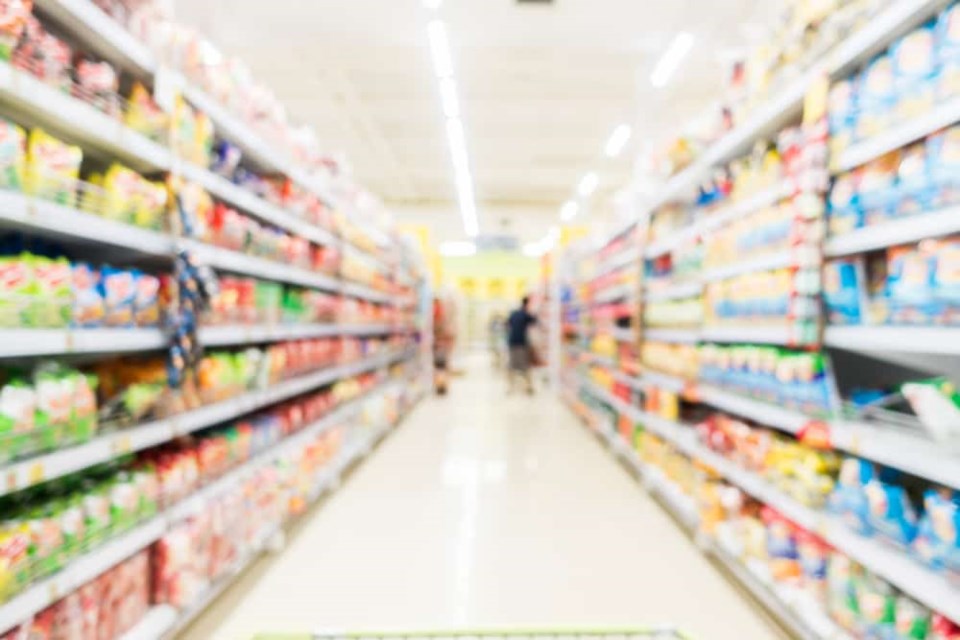British Columbians’ top concerns for 2021 – the environment and rapidly rising costs, according to a recent survey – collided at the tail-end of last year when severe flooding choked B.C.’s highway transportation network and disrupted supply chains further, exacerbating backlogs at Canada’s largest port.
“If our issues were in isolation and as long as that’s all that happened, not a problem,” said Andrey Pavlov, finance professor at Simon Fraser University, referring to how devastating storms rattled the West Coast economy.
“The problem is that it’s not just here, and it’s not just our floods and infrastructure.”
Supply chains across the globe have been disrupted throughout the pandemic, he said, contributing to the rising cost of goods at the same time as other ports deal with marine cargo congestion.
Inflation has been spiking around the globe amid the pandemic and, as of November, remains at an 18-year high of 4.7% in Canada. But the current combination of macroeconomic events, government policies and infrastructure shortfalls have left B.C. businesses and individuals under particular pressure from increasing costs, say experts.
“Our storms came at the worse time,” Pavlov said.
“I’ve been thinking about [the past two years] as an opportunity for Vancouver to step up, and increase capacity and increase its market share in terms of shipping and logistics. And the opposite happened. We were forced to search for alternatives.”
Barges and trucks were needed to transport gasoline into southwestern B.C. last month as the Trans Mountain pipeline shut down amid the storms. Ship traffic backlogs piled up at the Port of Vancouver at the same time as North America’s largest containerized cargo ports, Los Angeles-Long Beach, have also been facing traffic backups of their own.
“Whether we’re talking about the price of gasoline and getting goods through a somewhat fractured supply chain right now … or increased costs around commercial rent, those [B.C.] employers cannot afford to not pass on some of those cost increases,” said Bridgitte Anderson, CEO of the Greater Vancouver Board of Trade (GVBOT).
Despite expectations from many economists that the Bank of Canada will hike rates at least three times this year to tamp down inflation, Anderson said it will be a “bumpy” year ahead for B.C. consumers and businesses alike.
A September GVBOT survey conducted with the Mustel Research Group Ltd. found affordability and the cost of living (36%) to be the second most pressing issue facing the general population after climate change (49%).
Meanwhile, labour shortages, wages increases, supply chain disruptions and housing affordability have all been top of mind for GVBOT members, according to Anderson.
That’s in addition to government policies she said will also put cost pressures on businesses that will have to be passed onto consumers, such as ever-increasing municipal taxes, the province’s Employer Health Tax introduced in 2019 and B.C.’s new mandatory sick pay program.
Labour Minister Harry Bains has said that the program offering five days of paid sick leave will help with employee retention and productivity.
But Anderson is concerned that B.C. businesses face the spectre of mass short-term labour shortages as the highly transmissible COVID-19 Omicron variant keeps workers at home. That will further strain businesses that will likely have little choice but to pass on costs to remain afloat, she said.
And the province’s unique role as home to the country’s largest port puts additional pressures on it when it comes to the cost of goods.
“When we look at the rising cost of gasoline or continued supply chain issues globally, we know that that’s going to impact transportation, and particularly for our region where it’s a gateway,” Anderson said.
“That is a big concern.”
Meanwhile, many consumers have been eschewing much of the service economy – concerts, restaurant visits or nights out at the movies – and are instead sitting on savings accumulated amid pandemic-induced restrictions.
With more money to spend on goods, some goods are becoming increasingly scarce, which is further ratcheting up costs for consumers.
October’s Bank of Canada survey on consumer expectations found that households expect to boost their spending 3.7% over the next 12 months, while the pace of income growth is set for 2.1% during that same period.
“The wide wedge between income and spending growth suggests that households are likely to use some of their accumulated savings to support their spending during the recovery,” Toronto-Dominion Bank (TSX:TD) economist Ksenia Bushmeneva said in a note.
“While households’ finances remain in good shape, cushioned by excess savings and wealth gains, higher prices coupled with shortages of some items due to supply bottlenecks could weigh on consumer spending in the coming months.”
There are also some hidden costs adding up for individuals not necessarily captured by the Statistics Canada consumer price index, which most recently indicated inflation stands at 4.7%.
Pavlov acknowledged consumers must now face new burdens such as delivery service fees for increased takeout food or e-commerce purchases, investments in masks to enter establishments or at-home tests for those concerned they may have been exposed to COVID-19.
“Even when you just look at shopping for food, no one has food shortages now, but what we do see is less choice,” he said.
“What less choice means is you’re not being able to find items that you typically [buy] and then you switch to other items that often can be more expensive.”
The problem is further amplified when consumers then stockpile their favoured items, pushing prices higher, Pavlov said.
He said government programs such as wage and rent subsidies have staved off some price hikes in the immediate wake of the pandemic.
“Those measures can’t last forever. They’re in place for a while and then the programs end,” Pavlov said. “That’s really no way to run a business.”




